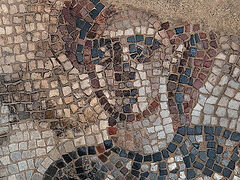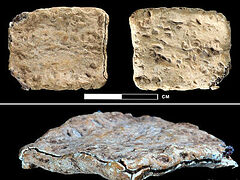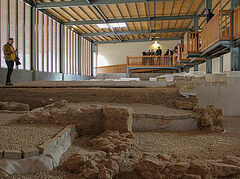Israel, August 2, 2022
A 1,500-year-old Byzantine convent was accidentally uncovered by the Israeli army, for the second time.
The monastery ruins, located in central Israel, are known as Horbat Hani, or Buri El Hanaya. Bits of ruins were first discovered in 2002 when the army was building a road. Archaeologists quickly got involved and uncovered the ruins of the convent, reports Haaretz.
Among the finds were a church paved with a colorful mosaic, dedicatory inscriptions to an abbess, a tower, the nuns’ cells, a building with a kitchen, refectory, and guests house, signs of wine and olive oil production, and an underground burial complex for women and children.
Given the local name, Buri el Hanaya, scholars believe the monastery was dedicated to the Biblical Hannah, the mother of the Prophet Samuel. Some archaeologists even believe the convent marks the burial site of Hannah, considered a prophetess in her own right.
After the initial uncovering in 2002, the site was covered up with earth for the sake of preservation. But in 2019, the army accidentally partly uncovered the site again, this time by a blast of some sort that damaged a small area of the convent.
“Thus was born the initiative to ‘leverage’ the incident, involve soldiers in re-excavation and cleanup, explain the concepts involved in environmental conservation, teach them about the heritage and the history of the Land of Israel and, in short, make a community project out of the whole thing and teach them about responsibility,” explains Issy Kornfeld, director of the excavation on behalf of the Israeli Antiquities Authority.
Thus, several dozen soldiers were involved in re-excavating the convent over the last month.
Based on findings at the site, it seems the convent continued to operate but waned under Muslim conquest.
“There was less demand for their wine, perhaps; and fewer pilgrims. Finally, it was abandoned in the late eighth century. Yet the local Muslim villages continued to bury women there, because of the sacred tradition of women there,” says Kornfeld.
Meanwhile, most of the mosaics have again been covered up with soil for their protection, while the army is still active in the area, though there are hopes of making it available to the general public in the future.
Follow OrthoChristian on Twitter, Vkontakte, Telegram, WhatsApp, MeWe, and Gab!







